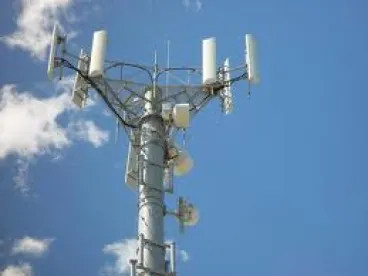In the Federal Register Volume 80, Number 72, dated Wednesday, April 15th, OSHA published a Request for Information (RFI) on Communication Tower Safety. The public comment period is open for 60 days and written comments must be submitted by June 15, 2015. Submissions must be identified by referencing Docket No. OSHA-2014-0018.
In its April 14th news release on this, OSHA pointed out that “[i]n the past 30 years, the increased demand for wireless and broadcast communications has spurred dramatic growth in communication tower construction and maintenance.” OSHA is aware of the safety risks posed by communication tower construction and maintenance activities and the rise in the number of injuries and fatalities suffered by employees. OSHA cites 2013 as being “the deadliest year for communication tower workers since 2006” – 15 incidents resulted in 13 fatalities, 11 of which involved falls, and of those 11 falls, 9 were fatal. The news release goes on to say that the actual number of fatal and non-fatal incidents is probably higher because these numbers only reflect OSHA ‘s investigation data from the Integrated Management Information System (IMIS) which does not cover incidents for individuals not covered by OSHA, e.g. the self-employed. Additionally, the information contained in the database was generally restricted to situations involving at least one fatality and/or three or more hospitalizations. The Agency is seeking information which will help guide it in deciding the best way it can proceed to help prevent injuries and fatalities during tower work. It is hoping to learn more about what kinds of hazards workers face, the types of incidents (fatal and non-fatal), and what employers are doing to address those hazards.
Communication Towers which carry antennas for wireless, cellular, radio or broadcast television communications, can range anywhere from 100-1000 feet in height. According to OSHA, the hazards involved in constructing and maintaining these towers include fall hazards, structural collapses, struck-by hazards, hazards precipitated by worker fatigue, radio frequency hazards, and inclement weather. The situation is complicated further by the fact that there are very often multiple employers involved, and layers of contractors and subcontractors performing the work. OSHA is looking for information regarding the causes of employee injuries and fatalities and the safe work practices and training which might be implemented.
At present, there is no standard specifically covering communication tower construction and maintenance, nor do the current standards provide comprehensive coverage for every activity involved. Fall protection is covered in part by OSHA’s standards for fall protection in construction (29 C.F.R 1926, Subpart M). However, this does not cover construction of new communication towers which falls under 29 C.F.R § 1926.105. Additionally, communication tower construction is exempt from OSHA’s requirements for steel erection activities (29 C.F.R 1926, Subpart R). OSHA’s general industry standards (29 C.F.R Part 1910) applies to maintenance work on communication towers while the telecommunications standard at 29 C.F.R § 1910.268 addresses, for example, training (§ 1910.268(c)). At times when none of these standards apply, OSHA has invoked the General Duty Clause of the Occupational Safety and Health Act of 1970 which requires employers to provide a workplace “free from recognized hazards that are causing or likely to cause death or serious physical harm.” Additionally, OSHA relies upon some consensus standards, such as The Telecommunication Industry Association standard TIA-222-G. Finally, two states, North Carolina and Michigan, have been prompted to enact their own communication tower standards.
OSHA’s RFI includes 38 specific, detailed questions spanning 4 pages regarding the information it is seeking. The first set of six questions are posed directly to Tower Climbers and asks them what kind of hazards they encounter, what they do to carry out the work in a safe manner, what safety-related work practices they would suggest, who instructs them as to how to do the work safely, what materials and training are they provided, who supervises them, their training, and the equipment used, what do they think can be done to improve safety, and how does the actual design or configuration of the towers affect their ability to safely complete their tasks.
The remaining questions are split into sections addressing: Training and Certification (there is currently no standard threshold for certification); Suitability for Work; Hazards and Incidents (further split into falls, structural issues, hosting materials and personnel, radio frequency hazards, weather, and other common hazards); Contracting Work and Oversight; Economic Issues (concerning number and size of companies, wage and worker turnover rates, equipment used and maintenance/replacement records, and whether employees are covered by workers compensation or an employer liability insurance policy); Tower Design; and, Regulatory/Non-Regulatory Approaches. OSHA has requested that when submitting comments, commenters state clearly their role in the communication tower work process and also give detailed answers.
Interestingly, in its introduction OSHA notes that “[i]ncreasingly, antennas are being installed on structures other than communication towers, e.g., on water towers, on electrical and telephone poles, and on the roofs of buildings. These alternative structures are often used in more densely populated areas where the construction of large communication towers is impractical or impossible, e.g., due to zoning restrictions”. Presumably, OSHA is intending to include these “structures” in its RFI. However, it is not entirely clear given that the RFI specifies that these are “structures other than communication towers,” and it does not explicitly include them in the information it is seeking.
The full text can be read at https://www.osha.gov/FedReg_osha_pdf/FED20150415A.pdf




 />i
/>i

